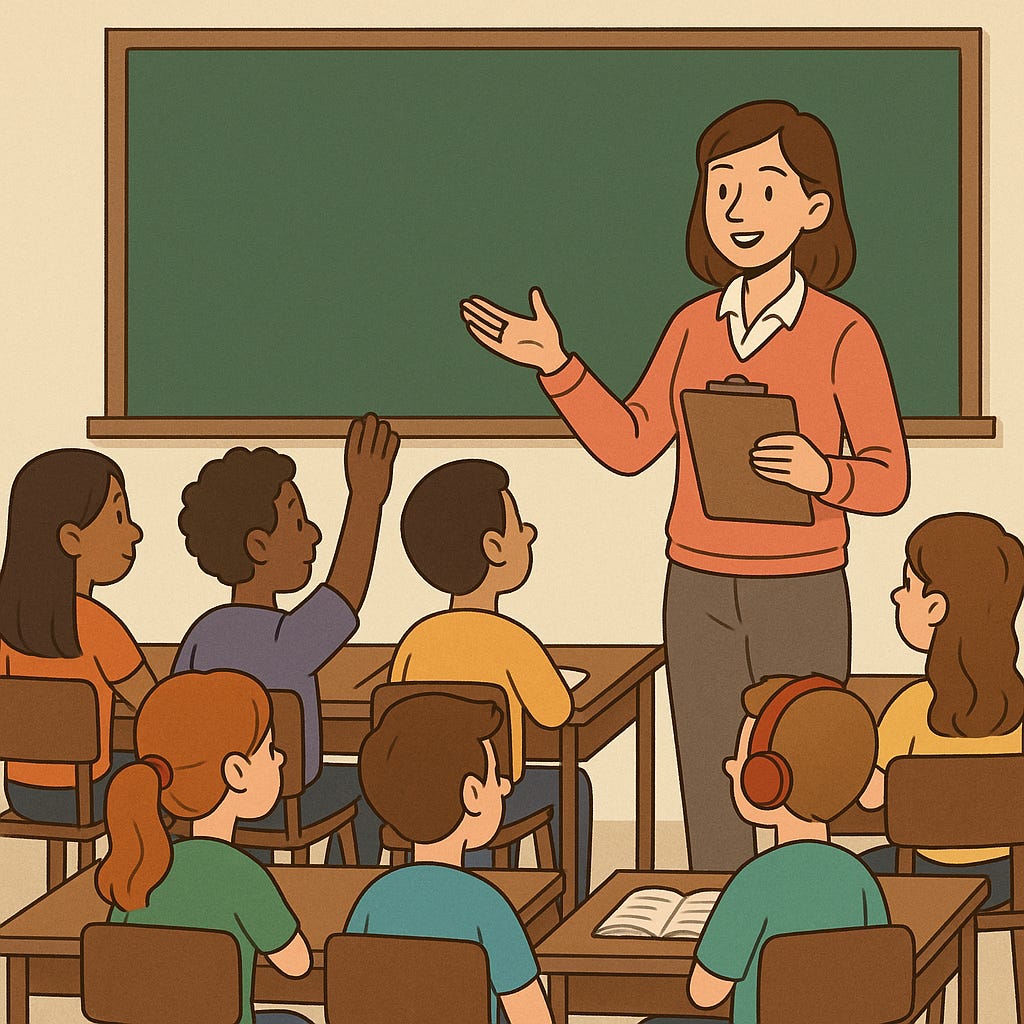Let’s start with a well-intentioned fairy tale. Once upon a time, a teacher stood before a classroom of 32 students—each with their own needs, reading levels, languages, traumas, IEPs, love of wolves, fear of math, peanut allergies, and TikTok addictions. And with nothing but a whiteboard and a dream, this teacher was expected to “differentiate” instruction for every single one of them.
Differentiation, in theory, is a beautiful concept. It says, “Meet every student where they are.” It promises equity through personalization. It’s the educational version of a bespoke suit: everyone gets what fits them best. But in practice? In some public schools today? Differentiation often looks less like custom tailoring and more like a one-size-fits-none scramble—one teacher juggling five instructional levels, two curricula, a behavior plan, a tech login issue, and a partridge in a pear tree.
Differentiation: A Philosophy Hijacked by Logistics
The original idea behind differentiation, as championed by Carol Ann Tomlinson and others, was sound: offer students multiple paths to understanding based on readiness, interest, and learning profile. But somewhere between the faculty lounge and the district office, this idea got stretched, flattened, laminated, and turned into a compliance checkbox.
Teachers are now expected to differentiate content, process, product, and environment—simultaneously—for English learners, gifted students, kids with disabilities, and the ones who just didn’t sleep well. And they’re expected to do this with no reduction in class size, no increase in planning time, and no miracle potion to clone themselves into a small instructional SWAT team.
It’s like asking a chef to prepare a four-course meal for 30 people—each with different dietary restrictions—using one hot plate and a spoon.
The Myth of the Magical Teacher
The mythology of the Differentiating Superteacher is alive and well. This teacher can instantly pivot when Jamal needs visuals, while Maria needs a graphic organizer, and Eli needs to pace while reciting facts. She can provide enrichment for the gifted, remediation for the struggling, and maintain rigorous grade-level expectations—all before recess.
But the reality is: the “differentiated classroom” often becomes a Frankenstein’s monster of partially implemented strategies and exhausted intentions. Group work turns into “keep them busy while I try to reteach this concept to Kevin.” Choice boards become PDF graveyards. And “student-centered learning” sometimes just means students doing worksheets in silence while the teacher triages.
Some Things Can Be Differentiated—But Not Everything
To be clear, some aspects of differentiation are both doable and valuable. A well-chosen visual aid, the option to write or draw, a slower pace for some students and scaffolding for others—these can make a real difference. But we must also admit: some concepts are just hard. There is no kinesthetic way to teach comma splices. No song will save you from the existential confusion of mitosis.
At some point, we have to accept that not all learning can be fun, and not all learners can be met exactly where they are every moment of the day. Sometimes students have to stretch themselves to meet the lesson, not the other way around. And sometimes the most equitable thing is not creating 32 versions of the same lesson, but teaching one clear version well—and giving students structured support to access it.
What We Really Need: Structural Differentiation
Here’s a radical idea: maybe differentiation isn’t just the job of the teacher. Maybe it’s the job of the system.
If we want real differentiation, we need fewer students per teacher. More co-teachers. Flexible schedules. Curriculum materials designed with accessibility baked in, not duct-taped on after adoption. We need time for collaboration, time for planning, and time for reflection—not just more strategies to implement during lunch.
Until that happens, differentiation will remain what it largely is today: a moral imperative backed by unrealistic expectations.
Conclusion: Let’s Be Honest
Differentiation, like most things in education, is both powerful and limited. It works best when it’s focused, thoughtful, and supported. But when it becomes the expectation that one teacher will be a reading specialist, behaviorist, translator, therapist, tech coach, and content expert all in one—it stops being differentiation and starts being delusion.
Let’s stop pretending that differentiation means customizing every lesson for every student every day. Instead, let’s strive for something more honest and sustainable: clarity, compassion, and a little bit of grace—for our students, and for our teachers.







